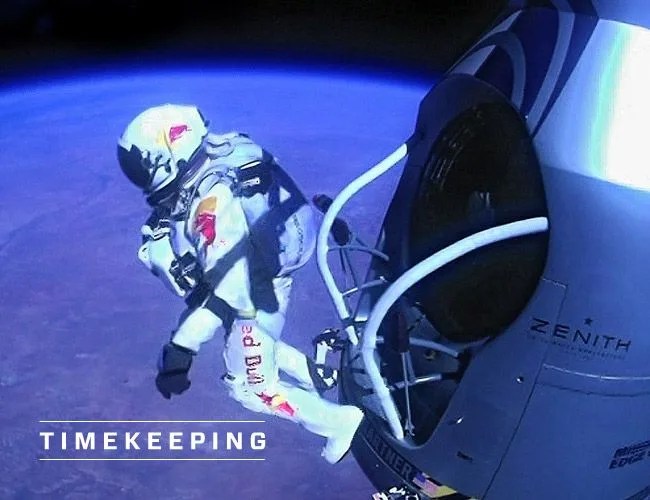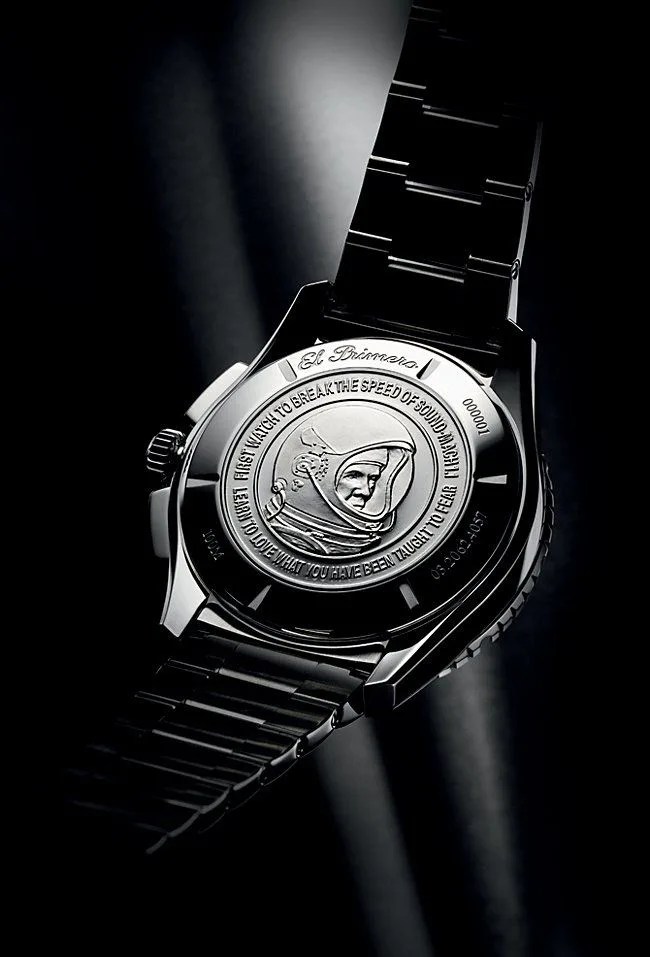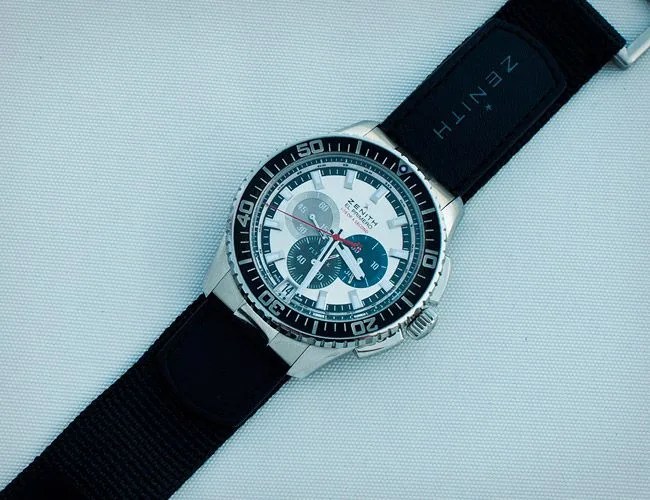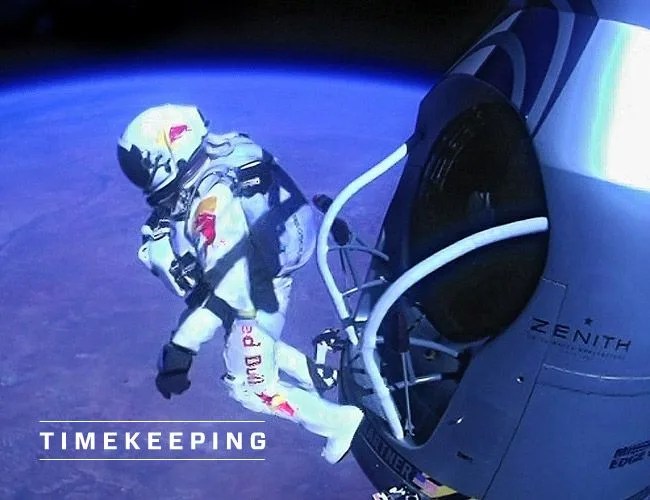 Zenith
ZenithJohn Glenn strapped a Heuer stopwatch to his wrist; Scott Carpenter wore a Breitling chronograph; and everyone knows the story of Omega’s Moonwatch. Now it’s Zenith’s turn to join the list of legendary space watches. When Felix Baumgartner stepped off that skateboard-sized platform this week and plummeted to Earth while millions watched, you may have noticed a watch strapped to his right arm. It was the Zenith Stratos Flyback Striking 10th and, as part of Baumgartner’s supersonic free fall, it now holds the distinction of being the world’s fastest wristwatch.
Read more about Zenith’s supersonic timepiece after the jump.
Zenith is a brand on a comeback. After decades of near-dormancy during the so-called quartz crisis, followed by some ill-conceived designs and questionable branding, the once venerable Swiss watch company is hitting its stride again. What’s the secret to Zenith’s newly rediscovered success? Going back to its roots.
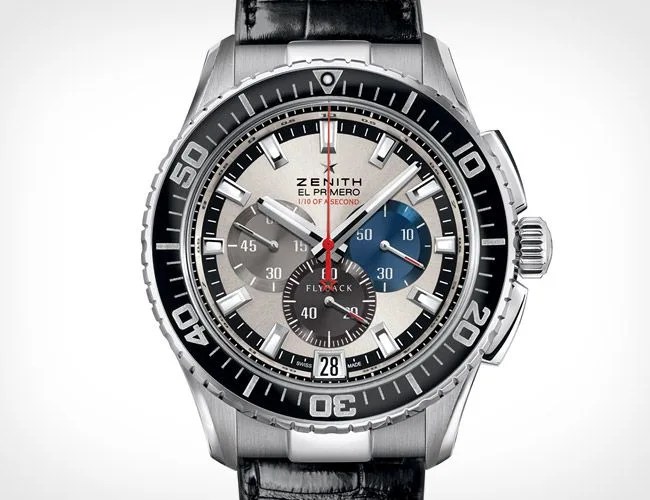
Before 1969, chronographs were all hand-wound; the problem of integrating a self-winding mechanism into the tight space of a chronograph movement was yet unsolved. But in that year that saw the space race reach its zenith, the world also saw another sort of race — one that culminated with Zenith’s creation of the world’s first integrated full-rotor automatic-winding chronograph: the El Primero.
The El Primero movement is unique not only for being the first automatic chronograph, but also due to the high speed at which the movement’s balance oscillates. The balance wheel swings back and forth an astonishing 36,000 times per hour (that’s ten times per second). The significance of this high frequency, other than making for a smoother traveling seconds hand, is in making the chronograph more precise and enabling it to subdivide time into smaller segments. In fact, the El Primero is capable of timing events down to one-tenth of a second. Never mind that your finger’s reaction time is far slower; from a watchmaking perspective, this is no small feat.
